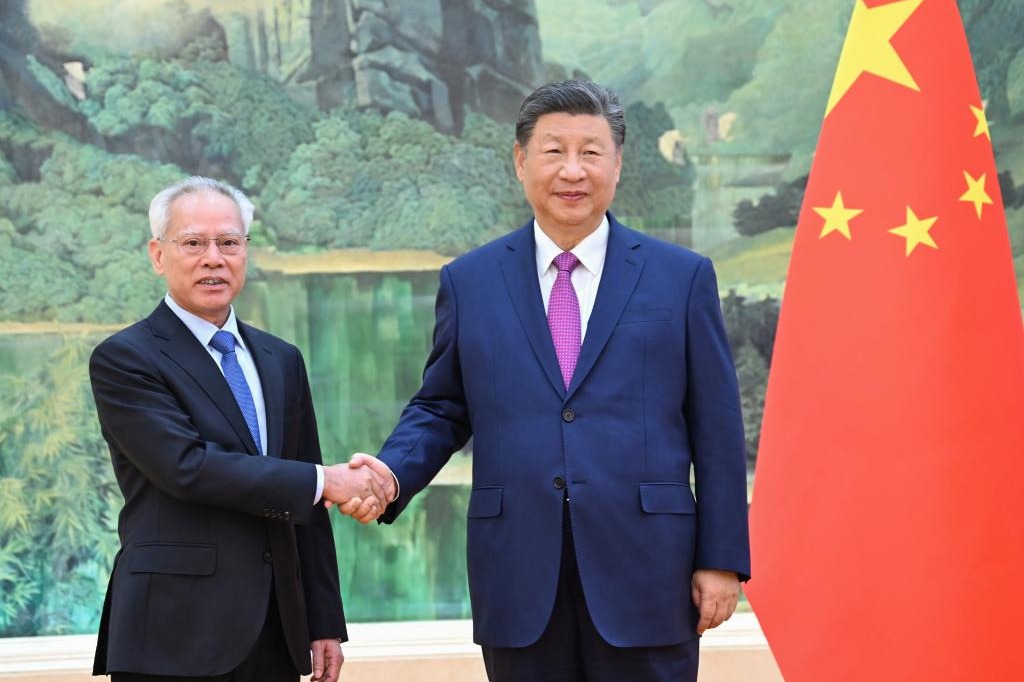In 'slowbalization' era, what benefits US hurts Global South
By Wang Jinbin | China Daily | Updated: 2023-07-24 09:13

In order to safeguard its global competitiveness and the dominant role of the US dollar, the United States faces two major challenges: maintaining its global technological supremacy and reducing external imbalances. Resolving these two issues forms the foundational logic of its economic and financial policy orientation in an era of "slowbalization" — a slowing down of the pace of global integration.
Neoliberalism had progressively assumed dominance in US foreign economic policies since the 1980s, captivating the world with a harmonious blend of trade liberalization and financial deregulation. The concept had not only shaped the trajectory of global economic and financial research, but also ushered in an era of unprecedented pace in global trade liberalization. Drawing on research conducted by the International Monetary Fund, the contribution of global trade to the global gross domestic product had ascended from approximately 30 percent in the early 1980s to nearly 55 percent right before the US subprime mortgage crisis in 2008.
Globalization, no doubt, serves as a pivotal engine for economic growth, helping enhance worldwide competitive efficiency and aid multinational corporations in seeking optimal cost benefits worldwide. As a result, the entire world can benefit from the dividends of incremental growth, effectively concealing the inherent contradictions of global external imbalances.
However, the outbreak of the subprime mortgage crisis greatly reminded the US of the immense financial and economic risks associated with extreme global external imbalances. Consequently, a slew of anti-globalization measures ensued, plunging the world into the era of "slowbalization", whereby the emphasis of the world's economy has shifted from economic division of labor to redistribution of existing benefits. Notably, the influence of political factors on economic competition has progressively widened during the process.
The trend of "slowbalization" has led the US to an inevitable challenge: the diminishing influence of its political and economic role on the global stage, epitomized by the waning influence of the US dollar-centered monetary system.
To temper the pace at which the influence of the monetary system recedes, US economic and financial policies have showcased two pivotal orientations — maintaining its global technological supremacy and reducing external imbalances — in order to fortify the competitive edge and creditworthiness of the greenback worldwide.
The former helps ensure the country's supremacy in the global economic and financial realm, while the latter serves dual purposes — it mitigates predicaments arising from excessive trade deficits, which can erode the credibility of the US dollar, and it alleviates pressure associated with the currency's "exorbitant privilege", ensuring a smoother trajectory for its enduring efficacy.
Technological supremacy
The US has carried out a series of policies to prevent the spread of advanced technologies. In 2018, its Department of Commerce introduced export control measures for high-tech trade in 14 sectors. In recent years, there has been a significant increase in moves restricting cutting-edge technologies, including entity lists, controls on advanced chips and their manufacturing equipment, as well as investment restrictions.
Under the guise of national security, the country has adopted a "de-risking" strategy to suppress competitors. The emergence of "nearshoring" and "friendshoring" — shorthand for the practice of relocating supply chains to countries only aligned with US interests — has become a new form of outsourcing in the restructuring of industrial and supply chains. The goal is to establish alliances within the chains, prioritizing geopolitical preferences and leaving behind principles of the global economic division of labor.
Easing deficits
Due to aforementioned technology restrictions, the role of the trade surplus in the tech services sector in offsetting the trade deficit in goods has significantly diminished, which is a departure from the situation in the 1990s. Faced with an expanding trade deficit, the US has primarily adopted the following two measures.
First, the Obama administration pursued a strategy of "manufacturing reshoring", while the Trump administration engaged in a trade war by imposing tariffs. The Biden administration, on the other hand, has embraced an approach involving government intervention in economic restructuring and development. It has encouraged foreign investment through substantial fiscal subsidies to establish local plants, thereby promoting significant growth in the manufacturing sector and enhancing domestic supply capacity.
Furthermore, the US continues to rely on the US dollar monetary system to leverage its financial advantages, despite the fact that the credit of the international reserve currency's exorbitant privilege has almost been depleted. Its net international investment position — the difference in the external financial assets and liabilities of a country — reached — $3.99 trillion by the end of 2008 during the subprime crisis, rising from — $1.66 trillion at the end of 2007 and, therefore, indicating increased borrowing of $2.34 trillion. Then its NIIP gradually expanded and even reached a record high of — $18.12 trillion at the end of 2021 due to the COVID-19 pandemic. However, in the first quarter of 2023, it contracted to approximately — $16.75 trillion, suggesting the increasingly limited operating space for the exorbitant privilege to offset trade deficits and generate positive returns.
In the future, the figure is still unlikely to witness significant and sustained shrinkage as the US will continue to increase fiscal deficits and utilize the exorbitant privilege to generate investment returns and mitigate the damage to the US dollar's creditworthiness caused by excessive trade deficits.
As for how the US will leverage its currency privilege, the answer probably lies in financial liberalization. Encouraging more emerging economies to fully open their capital accounts and allowing the free flow of capital provide it with opportunities to gain more investment returns. However, this often comes with the unpredictability of exchange rate fluctuations, financial vulnerabilities and currency shocks caused by the rapid movement of capital, as it had happened during capital account liberalization.
In summary, in the context of "slowbalization", the policy combination of maintaining global technological supremacy and reducing external imbalances is most beneficial for the US, but not necessarily for developing economies. Upholding cross-border capital controls and promoting orderly capital flows still remain crucial measures to address the adverse spillover effects of US foreign currency and financial policies.
The writer is a research fellow of the National Academy of Development and Strategy at the Renmin University of China. The article is a translation of his op-ed first published on the official WeChat account of the China Macroeconomy Forum, a think tank.
The views don't necessarily reflect those of China Daily.
























